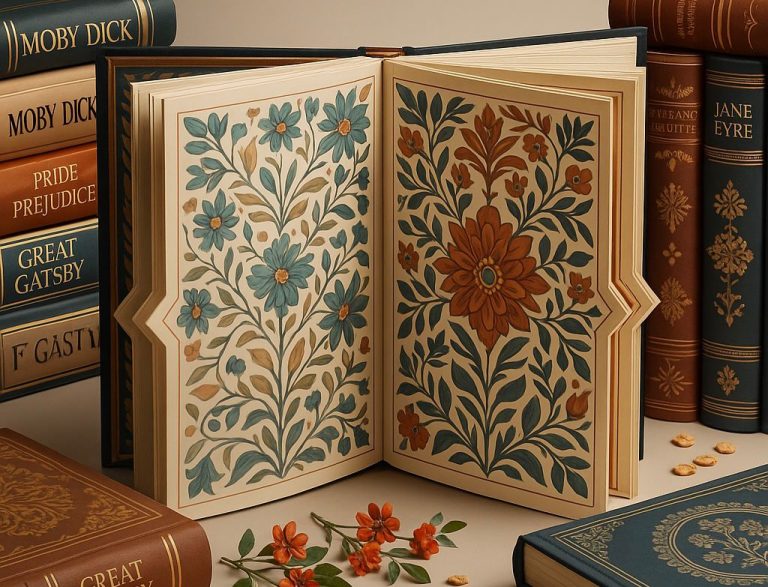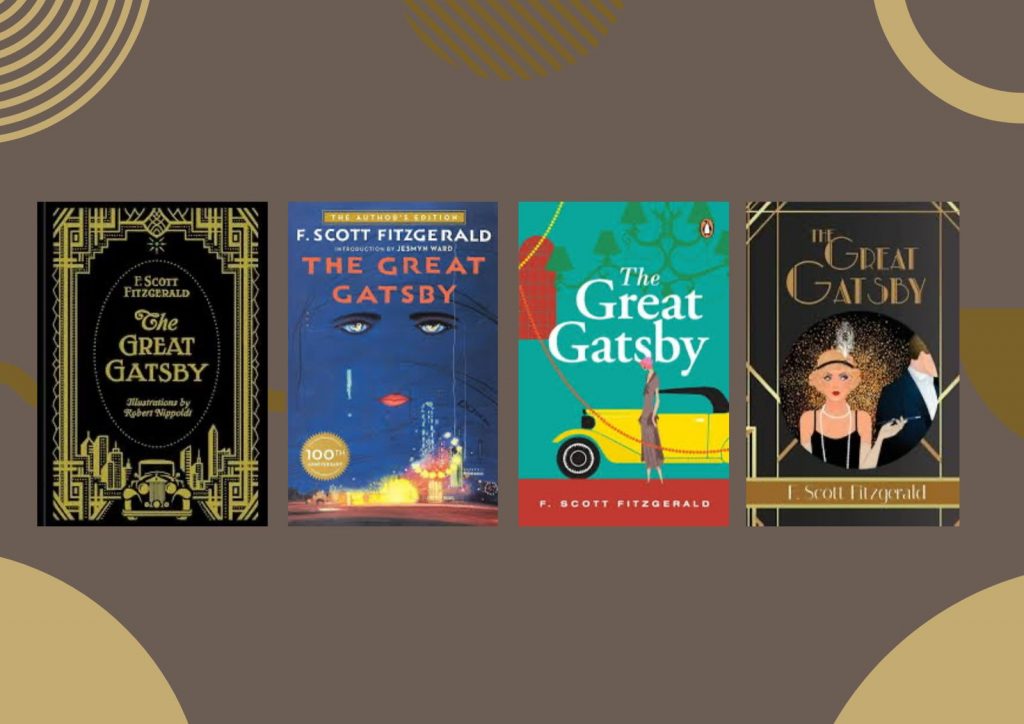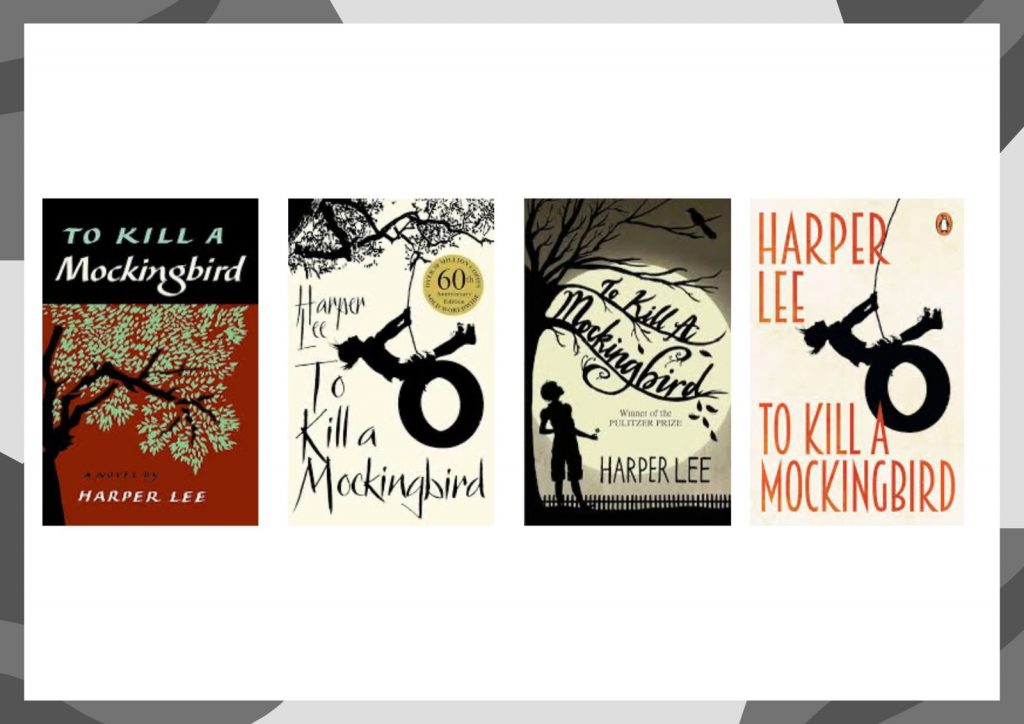Stories Told Before Page One: The Rise of Cover Aesthetics in India- 1
BY MEGHA ANN MATHEW
18 July, 2025

In a world dominated by the scroll, the swipe, and the screenshot, the old adage, “Don’t judge the book by its cover”, feels more quaint. Today, you must judge it and quickly because the fleeting digital first impression might be all a book gets. Readers now discover books through bookstagram, reels or a neatly framed photo on a Pinterest board, and publishers across the country are rethinking the function of the cover. It’s no longer just a protective layer; it’s the first page of the story, and increasingly, the most shareable.
This shift isn’t happening in isolation. Globally, too, book cover design is undergoing a renaissance. The publishers are now treating cover reveals like cultural events, creating teaser trailers and cinematic social media rollouts. Literary fiction, once limited to stark minimalism, is embracing colourful maximalism again. Around the world, visual storytelling has stepped out of the background and into the spotlight.
India, too, is embracing this global design renaissance, with its own flair. Over the past few years, Indian publishing has seen a quiet design revolution. Walk through a bookstore or scroll a publisher’s Instagram feed, and you will notice the difference: lush hand-drawn illustrations, bold typographic statements, intricate cultural motifs and a deepened interest in making covers as emotionally resonant as the stories they hold. This aesthetic evolution is helping Indian books stand taller on the global stage. A compelling cover design doesn’t just catch the eye of local readers; it has the power to travel. In translation markets, awards circuits, and global bookstores, a visually distinctive Indian title can now command attention with the same confidence as any international bestseller. Cover design, once an afterthought or a quick templated job, is now front and centre in a book’s branding strategy.
The Visual Turn: Why Covers Matter More Than Ever
“A cover is not a wrapper—it’s the doorway. It can open or shut a reader’s willingness to enter.”
The rise of Bookstagram and other visual platforms has changed the way readers engage with books. A compelling cover is what often prompts a screenshot, a share or even a purchase. For many young readers, the aesthetic appeal of a book is closely tied to its perceived value. A beautiful cover signals care, quality, and cultural cachet. It becomes a prop, a part of the reader’s identity, and a conversation piece.

But this isn’t just about vanity. The visual economy is now deeply tied to marketing logic. For Indian publishers, where discovery is a persistent challenge, a good cover can increase shelf impact, both online and offline. In a highly competitive market with limited bookstore real estate and an even more saturated digital ecosystem, standing out is crucial. A visually striking cover has the power to arrest a browser’s eye on a crowded shelf or feed. In physical stores, it can prompt a second glance, an impulsive pick-up, or an unexpected purchase. Online, where thumbnails rule and attention spans are fleeting, a compelling design can drive up click-through rates and ultimately conversions. Additionally, with algorithms often indexing visual data, even a cover’s colour palette can affect how prominently a book appears on a digital storefront. A bold and strategically coloured cover can affect visibility in e-commerce platforms. In a space where books often compete not only with each other but with every other form of digital entertainment, an eye-catching cover is more than just a design asset; it’s a sales strategy, a marketing hook, and a discovery tool all rolled into one.
Design That Went Viral
Book covers have long been more than just decorative sleeves, they’ve acted as powerful cultural artefacts, marketing tools, and reflections of a book’s soul. Decades ago, even in the absence of social media or digital previews, a book cover had to do the heavy lifting in grabbing attention from crowded bookstore shelves. And some covers did this so well that they became iconic.
Globally, think of the haunting celestial eyes on the original The Great Gatsby cover by Francis Cugat, an iconic painting of a disembodied face floating above the lights of New York became so compelling that it’s become almost inseparable from F. Scott Fitzgerald’s prose. The minimalist yet powerful design of To Kill a Mockingbird, with its tree motif, quietly echoed the novel’s themes of innocence and justice. The first edition of the ‘Peacock’ edition of ‘Pride and Prejudice’, published by George Allen with illustrations by Hugh Thomson, was elaborate, gold-embossed, and treasured by collectors, turning Jane Austen’s wit into visual elegance. A Clockwork Orange with its stark, almost menacing design and The Lord of the Rings covers with their epic, map-like artistry, are further proof that a good cover can shape a reader’s experience before they even turn the first page

In India, book cover design has had its own rich lineage. Satyajit Ray, long before he became a legendary filmmaker, made his mark as a visual storyteller through book design at Signet Press in the late 1940s. His covers, subtle, elegant, and deeply rooted in both Western and Indian aesthetics, stood out on the global stage. At the landmark 1949–50 Art of the Book Jacket exhibition at the Victoria and Albert Museum in London, three entries from Signet Press, designed by SatyajitRay, Ferrari Fouj by Premendra Mitra, Din Dupure by Leela Majumdar, and Indrani by Achintya Kumar Sengupta, earned international attention. The covers of Ruskin Bond’s books, many of which feature watercolour-style illustrations evoking the Indian countryside, have created a lasting aesthetic identity. Devdutt Pattanaik’s mythological works are instantly recognisable for their vivid, iconographic visuals. In the 1960s and ’70s, many local Indian artists contributed hand-drawn covers that reflected indigenous styles, from Kalighat painting to Madhubani motifs, giving books a deeply regional identity.
Fast forward to today, and the importance of the book cover has only grown. Publishers are giving older classics a second life through rejacketed editions: Penguin’s Clothbound Classics and Vintage’s minimalist Red Spine editions are beloved globally, while Indian houses are breathing new life into works by Manto, Chughtai, and R.K. Narayan through bolder, contemporary cover art.
Modern Indian cover design is flourishing. Titles like Many That I Am by Anungla Zoe Longkumer, Crafting the Word: Writings from Manipur by Thingnam Anjulika Samom, and The Heart Asks Pleasure First by Karuna Ezara Parikh, don’t simply represent the story, they evoke it. They use typography, colour, and composition to reflect themes of identity, language, and emotion.

Globally, newer books like Pineapple Street by Jenny Jackson and More Than This by Patrick Ness are examples of cover design that merges simplicity with visual storytelling. Bright colours, expressive fonts, and minimalistic illustrations are often used to trigger curiosity and aesthetic pleasure in equal measure.
Recognition of cover designers has also grown, with awards now spotlighting their contributions. The Oxford Bookstore Book Cover Prize in India has honoured covers that balance creative risk with deep relevance, like Devangana Dash’s book jacket for Conversations with Aurangzeb written by Charu Nivedita and Bhavi Mehta’s striking design for The Book Beautiful authored by Pradeep Sebastian. Internationally, organisations like the British Book Design and Production Awards, the American Institute of Graphic Arts (AIGA), and BBC Culture have spotlighted cover design as a legitimate creative art form.
A great book cover no longer just protects, it performs. It markets, entices, and frames the narrative, and often, it speaks before the first sentence does. Whether handcrafted, digitally illustrated, typographically bold, or nostalgically minimalist, today’s covers are telling stories of their own. For Indian books looking to resonate locally and globally, that’s not just important, it’s essential.
